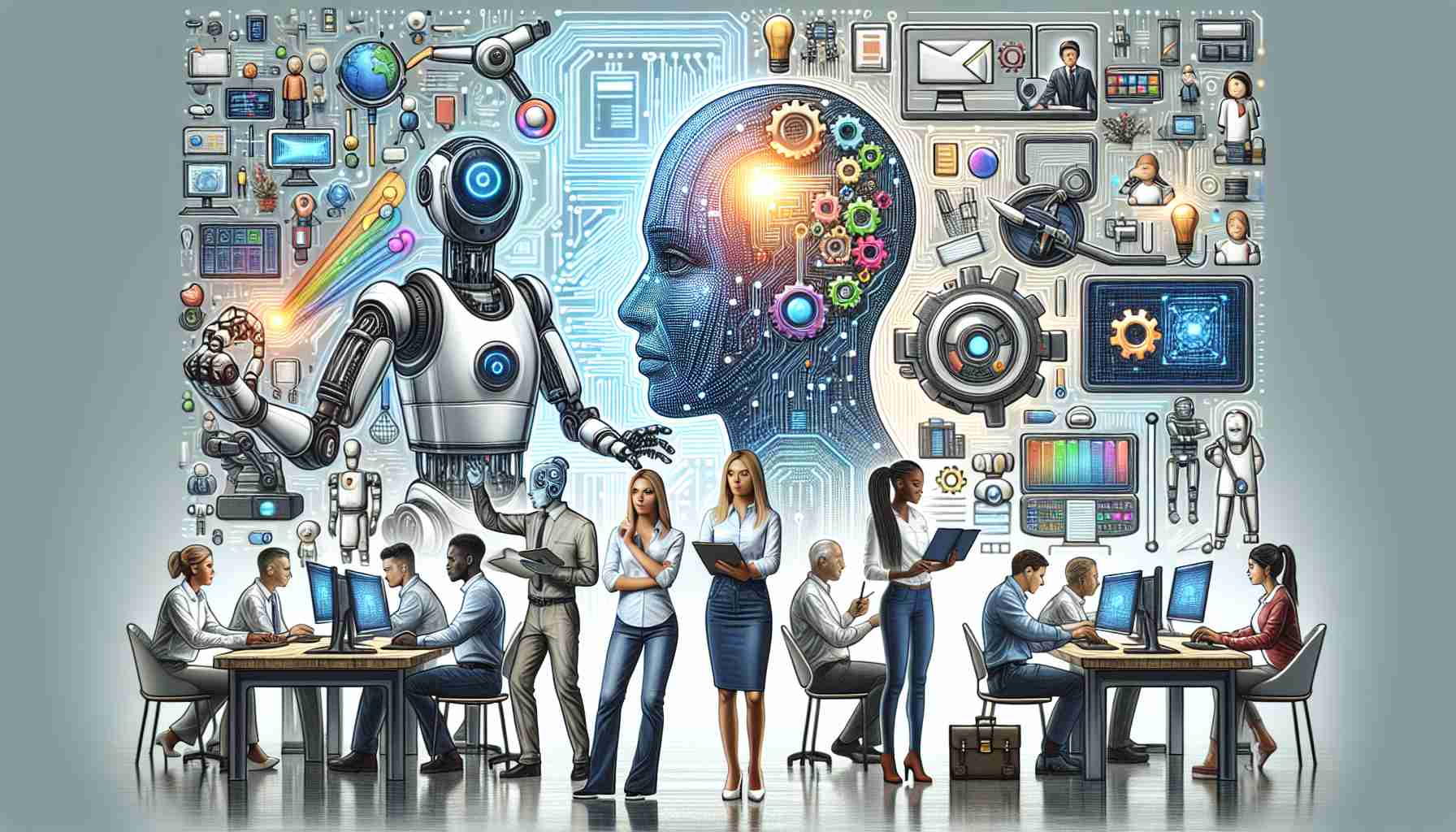The transformative power of artificial intelligence (AI) platforms and tools is widely acknowledged, presenting immense opportunities for the future of work. However, many organizations remain unprepared for the adoption of AI and machine learning (ML), with only a small percentage claiming to be fully ready. The main concern among CEOs is the lack of technical skills among their C-suite leaders to keep up with AI innovations.
Despite these reservations, decision-makers generally maintain an optimistic outlook regarding the ability of their organizations to adapt. A majority of CEOs welcome the adoption of AI and ML, recognizing the potential to significantly amplify human capabilities.
This optimism can be attributed to the visionary and adaptable qualities that distinguish true leaders. As organizations delve into the world of machine learning and AI, decision-makers understand the importance of adjusting and evolving their approaches. It’s not just about improving existing practices; it’s about embracing new tools and methodologies.
Nevertheless, the true challenge lies in how well organizations can navigate the changes AI brings to the nature of work. This extends to all levels of leadership, from the CFOs and CHROs to the CIOs. C-suite executives feel the pressure to innovate faster, improve risk management, and enhance talent acquisition and retention rates.
To address these challenges, functional leaders must move beyond conventional routines and augment their decision-making processes using AI. This enables them to match and surpass the speed of change. Finance leaders, IT leaders, and HR executives have displayed excitement about utilizing AI and ML within their respective functions.
The introduction of AI and ML technologies will inevitably disrupt the status quo. While many believe that these technologies will augment workloads and create new careers, others fear that they may lead to unemployment or even replace human workers altogether. Business leaders must be prepared to adapt their thinking and processes to support AI technologies and their outputs, with job roles, business models, and business processes subject to constant change.
Strategic self-disruption is an essential aspect of navigating the AI landscape successfully. Business leaders must actively innovate, even if it means disrupting their current profitable business models. It is crucial to remember that AI is only as accurate as the data it uses and the skills of the people operating it. Embracing continuous self-disruption will enable organizations to lead rather than follow the competition in the age of AI.
The true potential of AI will be realized when it helps individuals maximize their potential, leading to enhanced agility and responsiveness in the face of challenges. Workday’s finance and HR platform, which incorporates AI at its core, offers organizations the opportunity to redefine how work works and embrace the future with confidence.
An FAQ based on the main topics and information presented in the article:
Q: What is the main concern among CEOs regarding the adoption of AI and machine learning?
A: The lack of technical skills among their C-suite leaders to keep up with AI innovations.
Q: How do CEOs generally feel about the adoption of AI and ML in their organizations?
A: A majority of CEOs welcome the adoption of AI and ML, recognizing the potential to significantly amplify human capabilities.
Q: What challenge do organizations face in navigating the changes AI brings to the nature of work?
A: The challenge lies in how well organizations can navigate the changes AI brings to the nature of work, including improving risk management and enhancing talent acquisition and retention rates.
Q: What is strategic self-disruption and why is it important in the age of AI?
A: Strategic self-disruption refers to the active innovation and disruption of current profitable business models even in the face of potential risks. It is important because it allows organizations to lead rather than follow the competition in the age of AI.
Q: How can AI help individuals maximize their potential in the face of challenges?
A: The true potential of AI will be realized when it helps individuals maximize their potential, leading to enhanced agility and responsiveness in the face of challenges.
Definitions for key terms or jargon used within the article:
– Artificial intelligence (AI): The simulation of human intelligence in machines that are programmed to think and learn like humans.
– Machine learning (ML): An application of AI that provides systems with the ability to automatically learn and improve from experience without being explicitly programmed.
– C-suite leaders: Top executives in an organization, typically consisting of the CEO (Chief Executive Officer), CFO (Chief Financial Officer), CHRO (Chief Human Resources Officer), and CIO (Chief Information Officer).
– Augment: To enhance or supplement existing practices or processes.
– Strategic self-disruption: The deliberate and proactive disruption of current profitable business models in order to foster innovation and stay ahead in a rapidly changing environment.
Suggested related links:
– Workday – Workday’s official website, offering a finance and HR platform incorporating AI at its core.
– Forbes AI Articles – A collection of articles from Forbes related to artificial intelligence.
– IBM Watson – Learn more about IBM’s AI platform, Watson.
– CIO AI Articles – A collection of articles from CIO.com related to artificial intelligence.
The source of the article is from the blog publicsectortravel.org.uk

